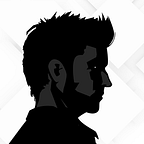Shedding Light on the Design Process
The design process is anything but a straight line. It forms from the tastes and needs of the client, the agency, the designer, and the end user, guided by research, best practices, and industry trends. Said trends exist both within the client’s industry specifically, and within the design community at large. It’s the designer’s job to bring all these elements together, creating visual appeal while helping to achieving a specific business goal.
As a way to demystify this process, let’s take a closer look at all the factors that come to bear on a design project. There are a lot of variables, some conflicting, others congruent, all valuable.
The client’s tastes and industry standards.
The client’s sensibilities are gleaned from a creative consultation, which takes into account how the client sees themselves, and how they want to be seen. Digital media they like, adjectives they use to describe themselves, what inspires them… All are taken into consideration. Also, their industry landscape provides a broader context for the designer to work in, namely what their competitors are doing well, and what they’re lacking. Projects can build on the latter, with opportunities created by the former.
The user’s needs.
Who’s going to be using the site or product? The client often tees up who the end users are, but proper research hones in on who they actually are, and what they really want. User interviews and testing is pivotal in all stages of a project, keeping the project team focused on user needs as a design takes shape. With each decision, the question should be posed: “How will this benefit the user?”
The agency’s design standards.
Many agencies have a set of standards for their output, guided either by a creative lead, or by a company philosophy. Often times, this polish is applied during internal reviews before the client ever sees the initial design work. Naturally, these quality checks can take many forms, but at the very least it ensures two things: Is the design feasible, as in will it scale to meet all likely variables, and more broadly, does it accomplish all the goals established by the client?
The designer’s personal style.
Each designer has a personal style, one that typically evolves over the course of his or her career. Every project brings new challenges that force the designer to create new and interesting solutions, and those solutions become tools that they can add to their kit. Good designers stay engaged with the latest design trends, and use them thoughtfully and with purpose. Great designers take in a wide range of inspiration, often outside of the digital world, and know how and when to break from convention while still meeting the needs of the end user.
Those are the ingredients that go into the pot. In the most general terms, the designer takes ideas, both abstract and concrete, and gives them visual representation in a cohesive way. The result is then run through a series of filters until the project is sufficiently refined for mass consumption.
It’s not an easy process, and it certainly walks a fine line between science and art, but with the right talent, working with the right tools and in the proper context, success is all but guaranteed.
Originally published at graftonstudio.com.
